Isolation of derivatives from the food-grade probiotic Lactobacillus johnsonii CNCM I-4884 with enhanced anti- Giardia activity
- PMID: 40145272
- PMCID: PMC11951713
- DOI: 10.1080/19490976.2025.2474149
Isolation of derivatives from the food-grade probiotic Lactobacillus johnsonii CNCM I-4884 with enhanced anti- Giardia activity
Abstract
Giardiasis, a widespread intestinal parasitosis affecting humans and animals, is a growing concern due to the emergence of drug-resistant strains of G. intestinalis. Probiotics offer a promising alternative for preventing and treating giardiasis. Recent studies have shown that the probiotic Lactobacillus johnsonii CNCM I-4884 inhibits G. intestinalis growth both in vitro and in vivo. This protective effect is largely mediated by bile salt hydrolase (BSH) enzymes, which convert conjugated bile acids (BAs) into free forms that are toxic to the parasite. The objective of this study was to use adaptive evolution to develop stress-resistant derivatives of L. johnsonii CNCM I-4884, with the aim of improving its anti-Giardia activity. Twelve derivatives with enhanced resistance to BAs and reduced autolysis were generated. Among them, derivative M11 exhibited the highest in vitro anti-Giardia effect with enhanced BSH activity. Genomic and proteomic analyses of M11 revealed two SNPs and the upregulation of the global stress response by SigB, which likely contributed to its increased BAs resistance and BSH overproduction. Finally, the anti-Giardia efficacy of M11 was validated in a murine model of giardiasis. In conclusion, our results demonstrate that adaptive evolution is an effective strategy to generate robust food-grade bacteria with improved health benefits.
Keywords: Bile salt hydrolases; Giardia intestinalis; Lactobacillus johnsonii; giardiasis; probiotic.
Conflict of interest statement
The authors declare that A. S. B. received a salary from Boehringer Ingelheim Animal Health, as part of a CIFRE PhD contract. H.R. and M.G. are currently employees of Boehringer Ingelheim Animal Health. The other authors declare no competing interests.
Figures
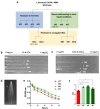




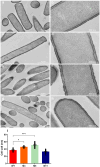

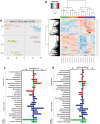
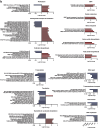
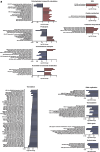

References
-
- Litleskare S, Wensaas K-A, Eide GE, Hanevik K, Kahrs GE, Langeland N, Rortveit G. Perceived food intolerance and irritable bowel syndrome in a population 3 years after a giardiasis-outbreak: a historical cohort study. BMC Gastroenterol. 2015;15(1):164. doi:10.1186/s12876-015-0393-0. - DOI - PMC - PubMed
-
- Rogawski ET, Liu J, Platts-Mills JA, Kabir F, Lertsethtakarn P, Siguas M, Khan SS, Praharaj I, Murei A, Nshama R, et al. Use of quantitative molecular diagnostic methods to investigate the effect of enteropathogen infections on linear growth in children in low-resource settings: longitudinal analysis of results from the MAL-ED cohort study. Lancet Glob Health. 2018;6(12):e1319–e1328. doi:10.1016/S2214-109X(18)30351-6. - DOI - PMC - PubMed
MeSH terms
Substances
LinkOut - more resources
Full Text Sources
Medical
Molecular Biology Databases
